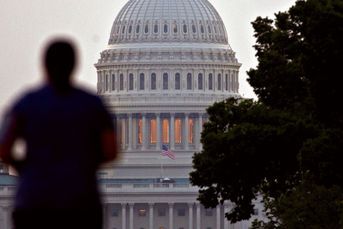Delay of DOL fiduciary rule faces new challenges
Office of Management and Budget designates the delay 'economically significant,' making it more difficult for DOL to justify stall.
Delaying the implementation date of the Department of Labor’s fiduciary rule became a more challenging proposition Tuesday.
The Office of Management and Budget concluded its review of the delay proposal but did not approve it yet, sending it back to DOL with an important change. The delay itself is now deemed “economically significant,” meaning the DOL must provide an analysis of the economic impact of the delay. When the agency submitted the delay proposal, it said the delay was not economically significant.
It was not immediately clear whether the change in status of the delay will push it beyond the April 10 implementation date of the DOL rule, which requires all financial advisers to act in the best interests of their clients in retirement accounts.
But giving the delay proposal the “economically significant” imprimatur at least ensures DOL has more work to do over the next few weeks.
“It’s such a mess,” said Erin Sweeney, a member at the law firm Miller & Chevalier. “It’s a tough position for the DOL to be in. I’m not sure how they have time to put together the economic analysis they need by April.”
The “economically significant” label was applied by OMB after proponents of the fiduciary rule had several meetings with OMB officials over the last two weeks.
The heightened analysis requirement “raises questions about whether [DOL] can get it done before the April 10 deadline,” said Micah Hauptman, financial services counsel at the Consumer Federation of America, who supports the rule. “It appears the department is going to have to rush through the process regardless.”
DOL cannot make the delay rule public until it is approved by OMB. It’s not clear when that will happen or when it will be published in the Federal Register. That publication date would likely start a comment period of at least two weeks. A DOL spokesman was not immediately available for comment.
Ms. Sweeney, a former senior benefits counsel at the DOL’s Employee Benefits Security Administration, said DOL could conduct a cost-benefit analysis of the delay or submit a revised proposal to OMB that calls for a shorter delay that doesn’t require an analysis.
It’s widely assumed that DOL is seeking a 180-day delay in the fiduciary rule implementation date so that it can reassess the measure as the agency has been directed to do by President Donald J. Trump. In a Feb. 3 memo, Mr. Trump told the agency to amend or replace the rule if it found that it harms investors or financial firms.
“They’re probably hunkered down at DOL trying to figure out what path to take,” Ms. Sweeney said.
The notice posted on the OMB website also said the delay of the fiduciary rule implementation date is a “major” rule. Under the Administrative Procedure Act, a major rule requires a 60-day window between when it is finalized and when it takes effect. Under that timeline, the delay would not go into effect until after April 10.
The DOL, however, could get around that requirement by issuing an “interim final rule” on the delay, which could take effect immediately without a comment period. That approach comes with its own high bar to clear. The agency must show “good cause” for taking such action.
“Good cause may be difficult to show,” said Susan Dudley, director of the George Washington University Regulatory Studies Center.
Even though DOL must adhere to the rulemaking process in implementing a delay, opponents of the rule still appear to be in a strong position because of Mr. Trump’s directive to the agency to reassess the rule.
In his memo, he echoed industry concerns that the rule is too complex and burdensome and could price investors with modest assets out of the advice market and subject firms to heightened liability risk. Proponents argue the rule is necessary to protect workers and retirees from conflicted advice that leads to the sales of high-fee investments that erode savings.
Although Mr. Trump is against the rule, supporters aren’t giving up.
“If industry opponents thought they could rush this through and kill the rule, they’re going to find significant resistance,” Mr. Hauptman said.
Learn more about reprints and licensing for this article.








